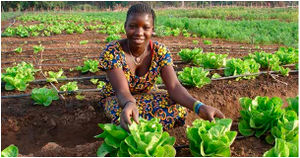Difference between revisions of "SPIS Toolbox - Loan assessment: Adjust Repayment Plan to Cash Flow"
***** (***** | *****) m |
***** (***** | *****) m |
||
| Line 1: | Line 1: | ||
| − | {{SPIS Banner}} | + | {{SPIS Banner}}{{Back to Finance}} |
=== '''<span style="color:#879637;">Loan assessment: Adjust Repayment Plan to Cash Flow</span>''' === | === '''<span style="color:#879637;">Loan assessment: Adjust Repayment Plan to Cash Flow</span>''' === | ||
Revision as of 12:40, 9 June 2017

Introduction
The Toolbox on Solar Powered Irrigation Systems (SPIS) is designed to enable advisors, service providers and practitioners in the field of solar irrigation to provide broad hands-on guidance to end-users, policy-makers and financiers. Risks related to system efficiency, financial viability and the unsustainable use of water resources can thus be minimized. The Toolbox comprises informative modules supplemented with user-friendly software tools (calculations sheets, checklists, guidelines). read more
Modules and tools touch upon:
- assessing the water requirements,
- comparing the financial viability,
- determining farm profitability and payback of investment in SPIS,
- sustainably design and maintain a SPIS,
- highlight critical workmanship quality aspects,
- and many more.

style="width: 160px; background-color: rgb(111, 142, 43);" | ►Back to the Module Page
Loan assessment: Adjust Repayment Plan to Cash Flow
SPIS, being based on agricultural activities, follows specific liquidity patterns, such as:
- irregularity, seasonality;
- farming-household mix;
- several cash generating activities (agricultural, non-agricultural);
- external shocks (climate, weather, pest, disease, prices).
Determining specific loan features (disbursement pattern, repayment rate, collateral, repayment frequency) should be based on cash flow projections of a particular case.
This means for the loan analysis process:
- in depth understanding of the farm and family economics;
- strong interaction with the potential borrower;
- networking with other sources of information in the sector and region;
- thorough understanding of the market and market trends;
- excellent staff with innovative attitudes.
SPIS goes along with high initial investment sums. These result in:
- long repayment periods (15-20 years);
- a need for high profitability of the SPIS;
- a need for a grace period at the beginning of the repayment plan.
Note: High installments resulting from very short loan repayment periods can create a threatening liquidity shortage – especially in the first years.
Outcome/Product
- Cash flow statement (current, projected);
- Tailor-made disbursement and repayment plan;
- Financial risk analysis/adjustment;
- Summarized risk analysis;
- Tailor-made loan details for decision.
Data Requirements
Collect, compute, prepare:
- total farm liquidity analysis (including household liquidity analysis (current + projected with SPIS));
- borrower’s own capital contribution;
- repayment potential;
- repayment plan;
- loan details.
People/Stakeholders
- Loan officers financing or planning to finance SPIS;
- Producer(s) / potential borrower;
- Management of financial service providers (operational level);
- Public entities promoting or/and subsidizing SPIS;
- Sponsors.
Important Issues
- Specific liquidity patterns need to be identified for every single case.
- Data collection process is challenging due to intermingled family-farm economy.
- High initial investment costs should ideally not lead to prohibitive transaction costs (consider bank-external subsidies);
- High initial investment costs should ideally not lead to liquidity shortages of the client due to high or very early installments (be flexible when defining installment plans).




















